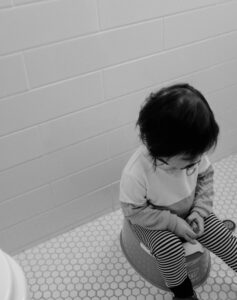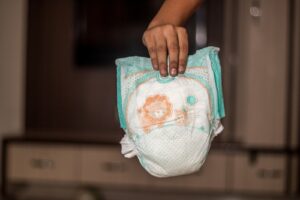 If you have an autistic child, then at some point in their early years you will have to help them with toilet training. Typically, children with ASD will show similar signs they are ready for potty training than any other developing children, however, they may occur later and training could take more time. Several common signs indicate when a child is ready for toilet training, these include:
If you have an autistic child, then at some point in their early years you will have to help them with toilet training. Typically, children with ASD will show similar signs they are ready for potty training than any other developing children, however, they may occur later and training could take more time. Several common signs indicate when a child is ready for toilet training, these include:
- Showing an ability to understand simple directions to sit on the toilet
- Being able to take their pants off themselves
- Exercising bladder control so they can stay dry for more than a few hours
- Expressing that they have made a mess in their nappy or clothes either verbally or through gestures
- Being able to form regular bowel movements
All children have problems and setbacks when toilet training, however, they may be more pronounced for children suffering from autism. Additionally, other conditions specific to kids with ASD, such as behavioral problems like fecal smearing and bowel issues including constipation.
There are three main causes of toilet training difficulties experienced by children with autism, the first is an unbalanced or limited diet that does not provide enough fiber and other nutrients that prevent constipation. The second cause is a lack of fluids in the body leading to dehydration and slower bowel movements. The third cause is a problem caused due to lower interoceptive awareness related to receptors located around the body that send signals to the brain to trigger certain actions and bodily functions. However, people with autism have impaired receptors so when it comes to knowing when to use the bathroom they may not feel the usual sensation signaling that they need to relieve themselves.
To make toilet training an autistic child easier, here are four tips and tricks that can help you plan and implement a toilet routine.
-
Make a Potty Training Plan First

Toilet training a child with autism can be a challenge so parents must take some time to carefully plan out their child’s potty training experience and make note of the equipment they will need. Furthermore, parents should research common gastrointestinal problems autistic children are likely to experience, for example, parents need to be aware of an increased chance of constipation in autistic children and know how to prevent fecal smearing which occurs as a result. Planning, preparation, and research are essential to making sure the toilet training process is stress-free for both the child and parents, this involves collecting all the equipment you need and then choosing and preparing a bathroom your child finds the most comfortable. You can also consult bathroom remodeling services to see what layout works for your child.
-
Get the Right Equipment
There are several things you can do that can help make potty training your child much easier, faster, and less stressful, including:
- Getting a timer
- Stocking up on wet wipes
- Buying potty seat and stool
- Plenty of underwear with characters, colors, or patterns your child likes
- Stocking up on your child’s favorite drinks and foods
- A box of educational books and toys which you can get from Toynk or other online stores should be stored in the bathroom or near the transitional potty to keep your child entertained whilst going to the toilet
- Rewards and treats used for reinforcement of successful toilet visits such as candy, stickers, toys, or access to games and electronic devices
- Visual aids such as the Picture Exchange Communication System (PECS) which you can stick to the wall of your bathroom to provide your child with a guide of visual cues and prompts to help remind them of how to use the toilet. In the beginning, it is a good idea to review the guide with your child a few times a day.
- Creating a chart to track your child’s progress so you can record if they were dry, wet, or soiled themselves before going to the bathroom.
-
Prepare the Bathroom
Once you have gathered all the required items you will need to choose one bathroom in your house that your child feels most comfortable and relaxed in and then set it up ready for toilet training by following these steps;
- Make sure the potty seat and stool are positioned near the toilet and always convenient to use
- Store fresh underwear, tissues, and wipes somewhere easy to get to
- Put your kid’s toy box and games in a place your child can reach them when sitting on the toilet
- Hide the box of rewards and treats somewhere they can’t access so they are only used to reinforce good toilet habits and successful visits to the bathroom
- Stick the visual guide detailing the right toilet routine on the wall so your child can regularly refer to it
- Tack the tracking sheet on a wall near the toilet
-
Follow a Toilet Training Routine
After collecting all the things you need and preparing the bathroom you can start toilet training with your child, however, you should mentally prepare yourself for plenty of challenges and remember that the process is going to require consistency, patience, structure, and time.
The first thing you should do is choose a date to start toilet training when your child has lots of free time without any activities or holidays planned. Next, introduce the idea of using the toilet to your child about one week before the start date by reading them toilet training books and stories as well as showing them a visual guide on how to use the toilet correctly.
Just before you start the process you should make an occasion to highlight the start of toilet training by saying goodbye to diapers or pull-ups and introducing underwear to your child. In addition, you should use positive language in simple sentences to encourage your child to use the bathroom, showing your child the rewards and treats for using the toilet will also help to reinforce good toilet behavior and habits.
After you have introduced a toilet routine to your child and they are wearing underwear, you can start your child’s potty training by following a series of steps which involves:
- Ensuring your child is drinking plenty of fluids and eating lots of fruit and vegetables full of fiber and nutrients. This will make them more likely to urinate regularly and have comfortable bowel movements, but if they haven’t been able to urinate an adequate amount then it would be a good idea to take them to an urology center for a quick check up.
- Using a timer to schedule bathroom visits every 20 minutes
- Tracking the result of each visit
- Setting the timer for 5 minutes each visit and keeping them entertained with toys during that time
- Rewarding your child instantly when they are successful
- Cleaning your child with wet wipes
- Repeating the process until your child’s bedtime

Toilet training a child suffering from ASD can be a challenging time for the child and parents, as health and mental conditions associated with autism can make the process difficult and stressful, however toilet training an autistic child can involve fewer problems if you plan it carefully and follow useful pieces of advice like those found in this article.







